| Designation: | Type 59 |
 |
|---|---|---|
| Manufacturer: | NORINCO - China North Industries Group Corporation - CNGC | |
| Product type: | Armoured Vehicles | |
| Name: | Main battle tank |
The Type 59 main battle tank (MBT) is the Chinese copy of the Soviet T-54A. Its manufacturer designation is WZ-120. A total of 10,000 examples of various versions have been built by the First Inner Mongolia Machinery Factory (PLA codename: 617 Factory) located at Baotou, Inner Mongolia. The PLA is currently deploying around 5,500 Type 59 MBTs, most of which are the improved variant Type 59-I/II upgraded with Western technologies. The Type 59 family will continue to serve as the backbone of the PLA armoured troops in the next decade.
The Type 59 main battle tank is a Chinese licensed production version of the Soviet T-54A. The Soviet Union and Chinese governments agreed on the transfer of T-54A technology in 1956. At the same time, the first tank manufacturing facility (617 Factory) was built up in Baotou, Inner Mongolia under the help of Soviet engineers. In 1958, the first Chinese-made T-54A using Soviet components rolled out from the assembly line.
In 1959, 617 Factory began to build T-54As using indigenously made components. During the military parade in Beijing on 1st October 1959 to celebrate the 10th anniversary of the People's Republic of China, 32 Chinese-made T-54A tanks were revealed to the public for the first time. In later 1959, the tank was officially designated as Type 59.
China has developed a series modified variants based on the Type 59, some of which are upgraded with Western technologies.
Factory No 617 carried out a number of improvements to the Type 59 MBT which resulted in the Type 59-I. This featured hydraulic booster technology to improve the opening and closing mechanisms for the safety door cover and cupola door cover, installation of a simplified fire-control system, laser range-finder, engine low-pressure alarm and automatic fire extinguisher.
Further development resulted in the Type 59-II which has the 105 mm rifled tank gun that can fire APFSDS, APDS, HEAT and HESH ammunition, two-axis stabilisation system for the main armament, light spot fire-control system, automatic fire extinguishing and explosion suppression system, 580 hp diesel engine, new radios and communications system.
The 105 mm rifled tank gun is similar to the Western L7 (UK)/M68 (US) and is fitted with a fume extractor and thermal sleeve. This has been referred to by US forces as the Model 1984 asthis was the first year that it was identified.
The Chinese 105 mm rifled tank gun fires Chinese-developed ammunition and this gun is also installed in a number of other Chinese MBTs including the Type 79 (qv), Type 80 (qv) and Type 85 (qv).
NORINCO is offering an upgrade package for the Type 59 MBT. The original 520 hp diesel will be replaced by a new 730 hp diesel giving a much higher power-to-weight ratio and therefore greater acceleration on the battlefield.
Other improvements include APFSDS-T ammunition for the 100 mm gun, rubber-bushed tracks, NBC system, friction shock-absorbers, gun stabilisation in both elevation and traverse and a new fire-control system incorporating spot injection in the gunner's sight.
Type 59 with 105 mm L7 gun
As a private venture Royal Ordnance of the UK has fitted a Type 59 MBT with the 105 mm L7A3 rifled tank gun. This, together with three other upgraded Type 59s, was tested in Pakistan in 1987. Additional details are given under Pakistan in this section. So far no country has adopted the 105 mm L7 upgrade for the Type 59 MBT, although Egypt has adopted this upgrade for its Russian T-54/T-55 series MBTs.
China North Industries Corporation (NORINCO) has developed an upgrade package for the widely deployed Chinese Type 59 and Russian T-54/T-55 MBT that includes the replacement of the current 100 mm rifled tank gun by a 120 mm smoothbore gun. As of early 1999 there are no known orders for the NORINCO 120 mm T-54/Type 59 MBT upgrade. This has also been referred to in Chinese sources as the Type 59 Kai.
The exact origin of the Chinese 120 mm smoothbore is not known as in the past, with the exception of the Western 105 mm rifled tank gun, all Chinese tank guns have been of Eastern design.
The 120 mm smooth bore is fitted to the Type 90, Type 85-IIM and Type 85-III MBTs and has enabled the crew to be reduced to three, commander, gunner and driver.
Some years ago China did develop and place in production the 120 mm self-propelled anti-tank gun Type 89 (details of which are given in the Tank destroyers section) which has a similar 120 mm smoothbore gun and the 120 mm weapon for the Type 59 upgrade is probably identical.
The 120 mm smoothbore gun is 6 m long and weighs 2,600 kg complete with breech mechanism. It is fitted with a fume extractor and thermal sleeve but has no muzzle reference system. To give an increase in barrel life the interior is chrome plated.
As well as firing Western natures of armour piercing fin stabilised discarding sabot (APFSDS) ammunition, such as the German Rheinmetall DM23 and DM33 and HEAT multipurpose, it can also fire 120 mm ammunition developed by NORINCO.
Like the Western 120 mm smoothbore ammunition, this has a semi-combustible cartridge case and all that remains after firing is the stub cartridge case. The penetrator has a respectable length-to-diameter ratio of 25.2/1 and complete with saddle weighs 7.33 kg. When in flight the penetrator weighs 4.1 kg.
The NORINCO APFSDS round has a muzzle velocity of 1,660 m/s and is claimed to have a similar armour penetration performance to NATO natures of ammunition, for example around 550 mm of rolled homogenous armour (RHA) at a range of 1,500 m.
Turret traverse is 360° with weapon elevation from -5 to+18°. A total of 28 rounds of 120 mm ammunition are carried compared to 34 rounds of 100 mm.
To improve first round hit probability a simplified fire-control system has been fitted which includes a laser range-finder. This enables the upgraded tank to engage moving targets when it is stationary, quoted engagement times are around 7 seconds for a stationary target and 10 seconds for a moving target.
Range, target horizontal angular speed and tilt angle of the 120 mm gun is inputted automatically while charge temperature, ambient air temperature, muzzle velocity and crosswind are entered manually as required.
While the weapon is normally laid on the target by the gunner, if required the commander can also take over, aim and fire. Various types of night vision equipment can be fitted as required by the user.
The secondary armament remains the same and consists of a roof-mounted 12.7 mm machine gun, 7.62 mm coaxial machine gun and a 7.62 mm machine gun which is fixed in the glacis plate and operated by the driver.
This may well be a local modification and is essentially a Type 59 with its turret removed, armed with a single 12.7 mm machine gun. As this vehicle is not believed to have a winch, it is limited to towing operations.
Early variants of the Type 59 is fitted with a Type 59 (Chinese copy of D-10T2S) 100 mm rifled gun. Ammunitions (34 rounds) include high explosive and armour piercing.
The Type 59-I is fitted with a modified Type 69-II (Chinese copy of D-10TG) 100 mm rifled gun. Ammunitions (44 rounds) include high explosive, high explosive fragmentation, and armour piercing discarding sabot with tungsten core.
The Type 59-II is fitted with a Type 81 105 mm rifled gun, which is a licensed product of the Israeli L7 gun. Ammunitions (44 rounds) include high explosive, high explosive fragmentation, and armour piercing fin stabilised discarding sabot.
The Type 59D1 is fitted with a Type 79 rifled 105 mm tank gun with alumni composite thermal sleeve. The armour-piercing depth of APFSDS round is 460~510 mm.
The Type 59D is fitted with a Type 83-I (also known as Type 83A) rifled 105 mm tank gun, which can also be found on the Type 88 MBT. The armour-piercing depth of APFSDS round is 460~510 mm. When using special (depleted uranium) rounds, the armour-piercing depth is close to 600 mm, which is better than the Russian T-90 and comparable to the Japanese Type 90.
The Type 59D/D1 can also fire 105 mm gun-fired missiles. The missile has a maximum range of 5.2 km, and an armour-piercing depth of 700 mm. The missile can also be used to attack low-flying helicopters. In a fire test, the missile shot down a target unmanned aerial vehicle (UAV) successfully at a distance of 4.8 km.
Auxiliary weapons include one 7.62 mm coaxial machine gun and a 12.7 mm/50-calibre anti-aircraft machine gun mounted on the command cupola.
Fire accuracy is attained by a computerised fire-control system, which includes a fire-control computer, light spot FCS with laser rangefinder input, and light spot gunner sight with passive night vision. Some Type 59Ds are also fitted with thermal image night vision.
Early variants of the Type 59 have relatively thin armour and are extremely vulnerable to ATGM and large calibre tank fire. The front armour of the hull and turret are 100 mm and 220 mm respectively.
On the Type 59D, wheels and tracks are protected by rubber hull skirts. The turret is surrounded by storage racks to provide additional protections against HEAT projectiles. The turret and hull are also protected by FY series explosive reactive armour plates in front, which was said to be capable of resisting a hit by 105 mm tank gun at a distance of 2,000 m.
The basic variant Type 59 does not have a collective NBC defensive system, and is only fitted with a semi-automatic/manual fire suppression system. The Type 59-I and later variants are fitted with automatic fire suppression system.
There are four smoke grenade launchers on each side of the Type 59D's turret. Additional smoke can be generated by injecting diesel fuel in to the engine's exhaust. The crew of Type 59D are protected by automation fire detection and suppression systems.
The Type 59/59-I/59-II/59-IIA are powered by a liquid cooled, turbocharged, 12-cylinder, 4-stroke 12150L diesel engine, which provide 520 hp. Torsion bar suspension with hydraulic shock absorbers on the first and fifth roadwheels.
The Type 59D has a modified 580 hp 12150L7 engine.
|
||||||||||||||||||||||||||||||||||
|
||||||||||||||||||||||||||||||||||||||||||||||||||||||||||||||||||||||||||||||
Related Articles |
|
QinetiQ and Pratt Miller Deliver First Robotic Combat Vehicle - Light to U.S. Army (02.02.2021) |
|
Military-Industrial Company LLC completed preliminary tests of the Boomerang armored vehicle (06.12.2019) |
|
BAE Systems unveils Robotic Technology Demonstrator Vehicle at AUSA (15.10.2019) |
|
General Dynamics UK selected for Army Warfighting Experiment 2019 (23.09.2019) |
|
Rheinmetall modernizing Puma infantry fighting vehicle and other equipment for NATO spearhead VJTF 2023 (25.07.2019) |
|
U.S. Army awards BAE Systems $45 Million contract for Extended Range Cannon Artillery prototype (22.07.2019) |
|
THALES AUSTRALIA AND GENERAL DYNAMICS ORDNANCE AND TACTICAL SYSTEMS DELIVERING FOR THE ADF (12.06.2019) |
|
GCS sets a new standard in mechanical mine clearance (24.05.2019) |
|
AV-8 AENBCRV Vehicle Prepares to Enter Malaysian Army Inventory (29.04.2019) |
|
FNSS Reveals PARS III 8x8 Engineering Vehicle (29.04.2019) |
|
BAE Systems awarded Armored Multi-Purpose Vehicle contract modifications by U.S. Army for Low-Rate Initial Production (24.02.2019) |
|
Nerekhta multifunctional UGV on the State tests (05.02.2019) |
|
Problems of Russian Vacuum APFSDS-T projectile (25.01.2019) |
|
Uran-9 Combat Robots began to enter into service in the Armed Forces of Russia (25.01.2019) |
|
U.S. Army awards General Dynamics contract for Mobile Protected Firepower (19.12.2018) |
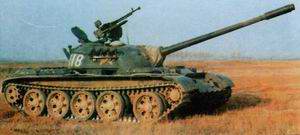 |
 |
 |
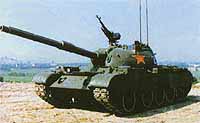 |
 |
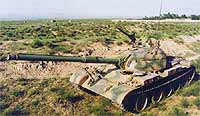 |
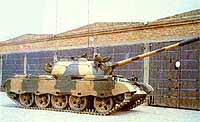 |
 |
 |
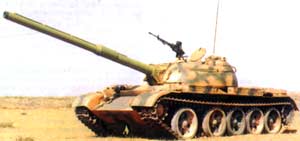 |
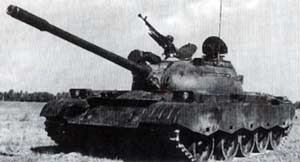 |















